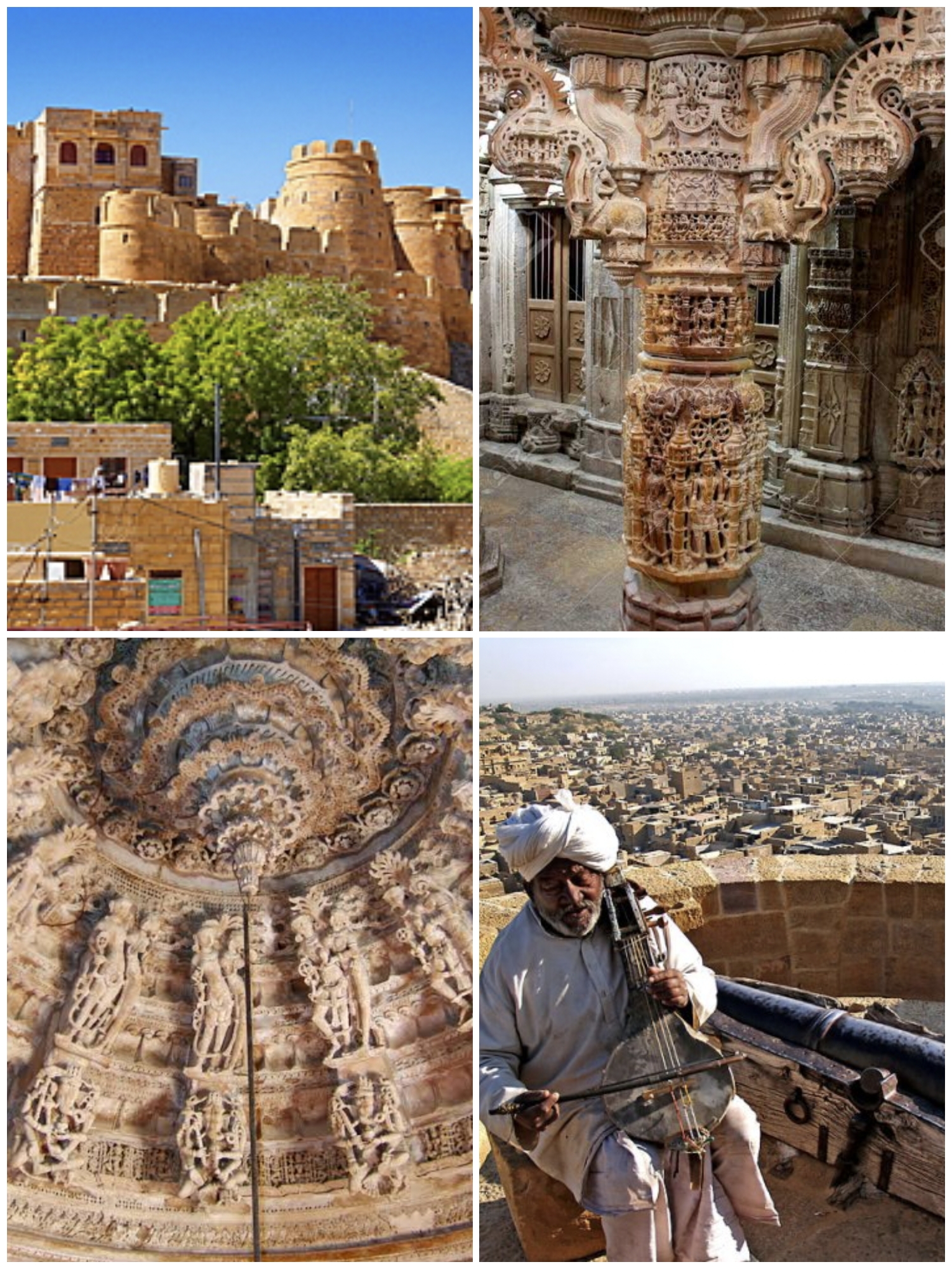
The mesmerizing Sonar Fort in the desert resembles something out of the Arabian Nights tales. Inside the fort, the magic of medieval life and luxury comes to life, showcasing the incredible craftsmanship of anonymous artisans through grand palaces, havelis, and temples. During the evening, as the sun begins to set, the fort becomes adorned with beautiful golden beige rays. At sunrise, the entire Jaisalmer blooms like a flower, enveloped in the gentle golden glow, earning it the name Sonar Fort, meaning the Golden Fort. Situated in the remote desert region of Rajasthan, bordering Pakistan, Sonar Fort embodies the rich history of valor, art, culture, divine energy, and spirituality that defines the lives of the desert people. These unique qualities led to Sonar Fort being included as a UNESCO World Heritage site in 2013. The restoration of the fort has also received financial support from various organizations, such as American Express.
The significance of Sonar Fort, located atop the 250-feet-high Trikut mountain in the heart of the city, lies in the absence of lime in its construction. The fort stretches 1500 feet in length and 750 feet in width, featuring 99 bastions, each standing 30 feet tall, resembling a garland. The double security system in place made the fort impregnable. The fort has four entry gates: Akhepol, Surajpol, Ganeshpol, and Hawapol. Beyond Hawapole lies a vast courtyard surrounded by houses, palaces, and temples, making it a residential fort.
Historical evidence suggests that the fort's foundation was laid by a ruler named Jaisal in the year 1155-56 AD, with construction completed in seven years. Subsequent rulers such as Tawat Jetsi, Bhimsingh, Manoharsingh, Amarsingh, Jaswantsingh, Akhesingh, and Gajsingh contributed to the fort's construction, adding pillars, bastions, palaces, and more. These rulers were said to be descendants of Krishna, and Jaisalmer served as their 9th capital. The fort was established on the triangular Trikut mountain, hence the name Jaisalmer-Jesalmeru.
The Rang Mahal, Gajniwas, and Moti Mahal within the fort exemplify magnificent architectural styles. The palaces showcase wall paintings, intricate wood and stone carvings, beautiful stone screens, windows, and corridors, adding to their beauty. The fort remained under the rule of the Rawal dynasty for a significant period. It changed hands due to various attacks but was later regained by the Rawal rulers. Under the treaty made during the time of Mughal Emperor Akbar, the fort came under Mughal control. Until the early 20th century, Sonar Fort served as a major trading hub for precious diamonds, gems, gold, dry fruits, and perfumes, along the safe desert routes connecting Sindh, Afghanistan, China, Russia, Iran-Iraq, and European countries, where camel trade thrived.
In front of the palaces, you'll find the Adinarayan and Shakti temples. The Laxminath temple, the only Hindu temple within the fort, holds special significance with its gold and silver doors. The nearby Anupam Jain temples exhibit exquisite architecture and sculpture from the 14th and 15th centuries. The temple's basement houses the Bhadra Suri Gyan Bhandar, where rare and ancient manuscripts, including those written on 1126 palm leaves and 2252 papers, are preserved. The longest manuscript found here measures 32 inches in length.
To witness the grandeur of Jain art and architecture, a visit to Jaisalmer is desirable